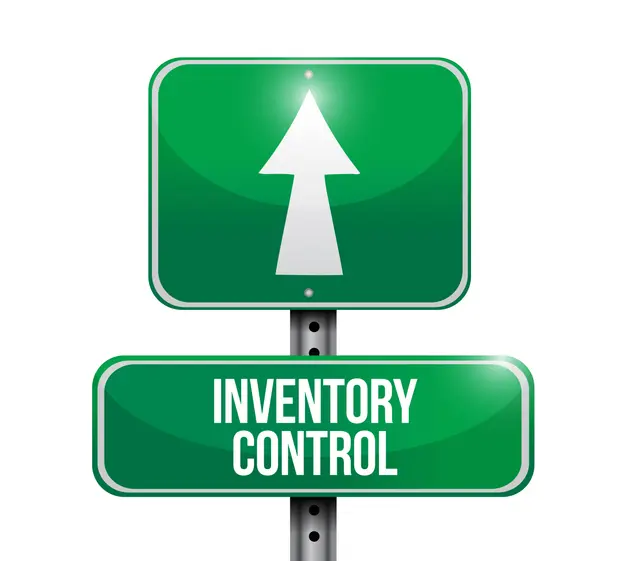We’ve all seen it happen. The phone rings on a Tuesday afternoon, and it’s the call every manager dreads. A key customer is on the line, and they’re not calling to chat. Their shipment is late—again—and it’s grinding their production line to a halt, costing them thousands with every passing hour. Meanwhile, your team is in a frantic scramble, digging through a tangled mess of spreadsheets and email chains, just to find an answer that should have been a two-second click away. This is the moment the real cost of an outdated supply chain hits home, forcing you to ask a tough question: keep wrestling with spreadsheets, or finally invest in the clarity and control of modern software?
Understanding the Two Approaches
Before we get into the money, let’s be clear on what we’re actually comparing. Manual supply chain planning is the classic, old-school way of doing things, usually cobbled together with a bunch of disconnected tools. Think Excel spreadsheets for tracking inventory, a constant barrage of emails to coordinate with suppliers, and endless phone calls to confirm that a shipment actually left the warehouse. The whole system hinges on constant human intervention, tribal knowledge locked in a few key people’s heads, and a staggering amount of manual effort for every single task.
On the other side of the ring, supply chain software is a single, centralized platform built to run the whole show. It becomes your one source of truth, automating all the tedious stuff and giving you real-time data on every moving part of the operation. Instead of guesswork and manual calculations, it uses algorithms and analytics to nail critical functions like demand forecasting, inventory levels, and logistics planning with data-driven precision.
The True Cost of Manual Supply Chain Planning
Here’s the most dangerous illusion of manual planning: the idea that it’s “free.” Sure, you’re not paying a subscription fee for Excel, but the hidden costs are quietly bleeding your business dry. And these expenses aren’t just about administrative overhead; they impact your team’s efficiency, your bottom line, and your ability to stay competitive.
Direct Labor and Administrative Costs
The most obvious cash drain of a manual system is the sheer amount of time it devours. Think about the salaries of your planners, procurement specialists, and logistics coordinators. How much of their day is spent on low-value, repetitive work? We’re talking about hours spent on manual data entry, triple-checking information across different spreadsheets, calling a warehouse to verify stock levels, and then manually piecing together data for a simple weekly report. When you add up those hours, across your whole team, for an entire year, you realize a huge chunk of your payroll is just funding inefficiency.
Financial Impact of Human Error
And let’s be real: wherever there are spreadsheets and manual data entry, human error is going to follow. The financial fallout can be brutal. One little typo in a purchase order could mean ordering ten times the raw materials you need, leading to thousands in dead stock or production delays. A mistake in a shipping address sends a pallet of goods to the wrong city, racking up expensive re-routing fees and blowing past delivery deadlines. Or the classic: a miscalculation in an inventory sheet leads to unexpected stockouts of your most popular product, which means lost sales and unhappy customers who are now looking at your competition.
Scalability and Opportunity Costs
This might be the biggest hidden cost of them all: manual planning puts a hard ceiling on your growth. The spreadsheet system that sort of worked when you had 100 orders a day completely falls apart when you hit 1,000. That inability to scale creates a massive opportunity cost. It’s the cost of the bigger contracts you can’t take on, the major clients you can’t serve, and the new markets you can’t touch because your backend systems simply can’t handle the volume. On top of that, the time it takes to manually pull and analyze data means you’re always making decisions based on old news. By the time you get the report together, the market has already shifted, leaving you perpetually a step behind.
The Investment in Supply Chain Software
Okay, let’s talk about the upfront cost of moving to a dedicated software solution. Yes, it’s a real financial outlay. But it’s crucial to see this as a strategic investment in your company’s engine room, not just another line-item expense. Breaking down the costs shows a clear path toward a much more efficient and controlled operation.
Licensing and Subscription Fees
Pricing for supply chain software generally comes in two flavors. You’ve got the old-school perpetual license, which is a big, one-time payment that lets you own the software forever. The much more common model these days is Software-as-a-Service (SaaS), which is a recurring monthly or annual subscription. The beauty of SaaS is that it’s flexible and can grow with you. Pricing is usually tiered based on things like how many people will use it, which specific features you need (like warehousing or forecasting), and your total transaction volume.
Implementation and Integration Costs
This is the one people often underestimate. Implementation costs are the one-time fees to get the software up and running in your world. This covers things like migrating all your historical data out of those old spreadsheets, configuring the software to match how your company actually works, and—most importantly—integrating it with your other core systems. Getting it to talk seamlessly with your ERP, e-commerce site, or accounting software is absolutely critical for creating that single, unified source of truth we talked about.
Training and Ongoing Support
An investment in great tech is worthless if your people don’t know how to use it. Proper training is essential to make sure your team can actually tap into the system’s full power. This might mean paying for training sessions from the vendor, or simply accounting for the employee time needed to get up to speed. After you’re live, there are usually ongoing fees for technical support and maintenance contracts. These ensure your system stays secure, gets updated with new features, and that you have an expert to call when you need help.
Quantifying the ROI of Supply Chain Software
The real “aha!” moment comes when you start to measure the return on this investment (ROI). You’ll find that the initial costs are often quickly balanced out by real, measurable gains in efficiency, savings, and even new revenue. The software doesn’t just do what your spreadsheets did, only better; it opens up entirely new ways to improve your financial performance.
Inventory and Operational Cost Reduction
One of the biggest financial wins comes from inventory optimization. By using smart algorithms for demand forecasting, the software gets way more accurate, which means you can stop relying on massive amounts of expensive “just in case” safety stock. This has a direct impact on your inventory holding costs—the money you spend on warehouse space, insurance, and capital that’s just sitting on a shelf. It’s not uncommon for businesses to see a 15-30% drop in inventory levels. On the operational side, the software can optimize shipping routes to cut down on fuel, combine shipments to get better freight rates, and automate procurement to free up hundreds of work hours.
That’s exactly the kind of impact Intuendi delivers. Our AI-powered platform helps companies cut inventory levels, free up working capital, and streamline operations—turning supply chains from cost centers into competitive advantages.
Revenue Growth and Customer Satisfaction
Beyond just saving money, this software can be a serious engine for growth. Having real-time visibility into your inventory practically eliminates stockouts. That means the product is on the shelf when your customer wants to buy it, preventing lost sales. Even better, having a locked-in logistics plan means your deliveries become incredibly reliable and on-time. That kind of consistency is a massive driver of customer satisfaction and loyalty. It turns one-time buyers into repeat customers and builds a rock-solid brand reputation that your competitors can’t easily match.
Beyond the Numbers: Non-financial Considerations
The switch from a manual mess to an integrated software solution brings a ton of benefits that won’t show up on a balance sheet but are just as critical to building a healthy, resilient company.
First, you get way better collaboration. When your sales, procurement, and warehouse teams are all looking at the same real-time data, the silos start to crumble. Sales reps can promise delivery dates with confidence. Procurement can see a sales trend and proactively order supplies. Everyone is finally on the same page.
Second, think about employee satisfaction. By automating all the mind-numbing, repetitive tasks, you free up your smart, talented people to do more strategic work—like analyzing market trends, negotiating better deals with suppliers, or solving complex problems. This isn’t just about reducing burnout; it’s about getting the absolute best out of your team.
Finally, software gives you a critical strategic edge: adaptability. In a world that’s constantly being disrupted, the ability to pivot fast is everything. Real-time data lets you spot a supplier delay or a sudden surge in demand the moment it happens, allowing you to adjust your strategy on the fly and turn a potential crisis into a non-issue.
Making the Right Decision for Your Business
So, how do you choose? It all comes down to taking an honest look at your company’s specific situation. The first step is to analyze your current needs. Where are the biggest fires in your supply chain right now? Are you constantly dealing with stockouts? Are shipping costs spiraling out of control? Is your team spending all their time reacting instead of planning? And just as important, where do you want to be in three years? A system that’s barely working today will be a boat anchor tomorrow.
Once you have that clear picture, you can accurately compare the long-term ROI of software against the slow, steady bleed of your manual system. Add up the real costs of wasted labor, expensive mistakes, and missed opportunities. Then, weigh that against the tangible returns software delivers through inventory savings, operational efficiency, and revenue growth. The math will quickly tell you if the upfront investment makes sense for your future.
From Cost Comparison to Strategic Imperative
In the end, the choice between supply chain software and manual methods isn’t just about comparing costs on a spreadsheet. It’s a fundamental decision about the kind of company you want to be. It’s the choice between being reactive or proactive, between inefficiency and optimization, between stagnation and growth. In today’s market, having a responsive, data-driven, and digitally-powered supply chain isn’t a luxury for megacorporations anymore. It has become a strategic imperative for any business serious about gaining a true competitive advantage and ensuring it not only survives, but thrives.






